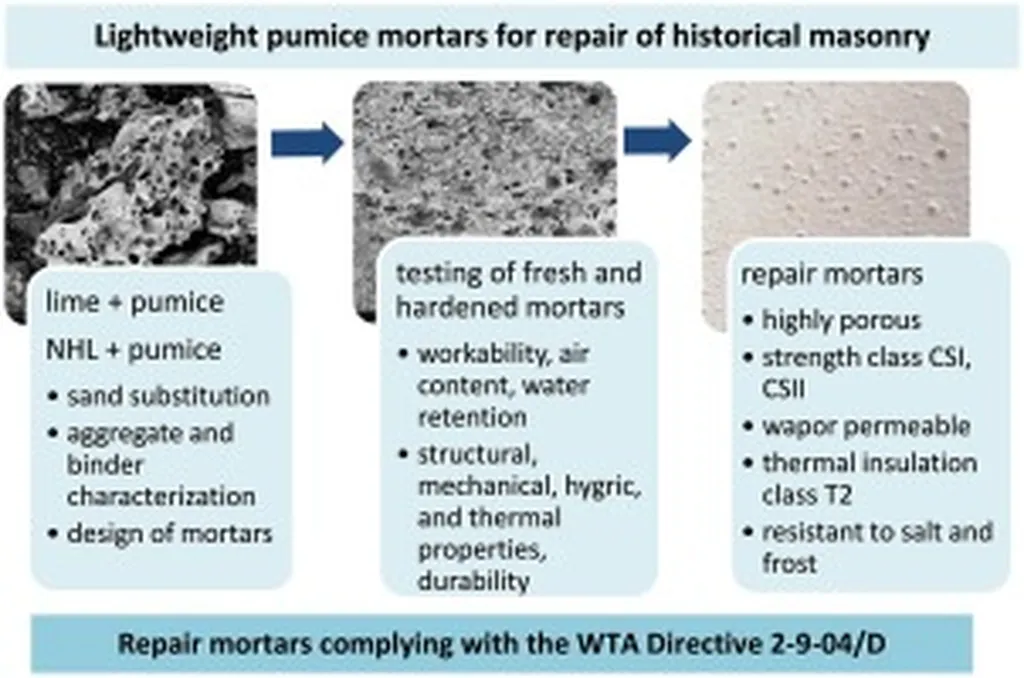In the quest for more sustainable and energy-efficient buildings, researchers are continually exploring innovative materials and techniques. A recent study published in the *Journal of Sustainable Construction Materials and Technologies* (translated from Turkish as *Journal of Sustainable Construction Materials and Technologies*) has shed light on how certain lightweight aggregates can significantly improve the water vapor permeability of cement-based mortars, a finding that could have substantial implications for the energy sector.
The study, led by Lütfullah Gündüz from Izmir Katip Çelebi University’s Department of Civil Engineering, investigated the effects of expanded perlite and exfoliated vermiculite aggregates on the water vapor permeability of lightweight mortars. These materials are not new to the construction industry, but their specific impact on vapor diffusion has been less understood until now.
Water vapor permeability is a critical factor in building materials. It allows moisture generated indoors to escape to the outside, preventing condensation that can damage building materials and reduce insulation performance. “Condensation that may occur inside and/or on the surface of a building section due to inadequate water vapor diffusion negatively affects heat transfer in building materials and reduces insulation performance,” Gündüz explained.
In their research, Gündüz and his team created several cement-based composite mortar designs using expanded perlite and exfoliated vermiculite aggregates. They used two types of expanded perlite, each expanded at different temperatures (765 °C and 985 °C), and two types of vermiculite with different expansion rates (55% and 85%). The results were promising.
The study found that the water vapor resistance coefficients of the lightweight aggregate test samples varied between 3.40 and 6.70. Notably, higher expansion rates in the production of these lightweight aggregates led to lower water vapor resistance coefficients in the resulting mortars. This means that the materials allowed water vapor to pass through more easily, enhancing their performance as vapor retarders.
The commercial implications of this research are significant. In the energy sector, where insulation performance is paramount, these findings could lead to the development of more effective and efficient building materials. By incorporating expanded perlite and exfoliated vermiculite aggregates into cement-based mortars, construction companies could create lighter, more breathable materials that improve indoor air quality and reduce energy consumption.
Moreover, the use of these lightweight aggregates could contribute to more sustainable construction practices. As the world grapples with the challenges of climate change, the demand for eco-friendly building materials is on the rise. This research could pave the way for innovative solutions that not only enhance energy efficiency but also reduce the environmental impact of construction.
As the industry continues to evolve, the insights gained from this study could shape future developments in the field. By understanding the role of lightweight aggregates in water vapor permeability, researchers and practitioners can work together to create more advanced, sustainable, and energy-efficient building materials. The journey towards a greener future in construction is underway, and this research is a significant step in the right direction.

